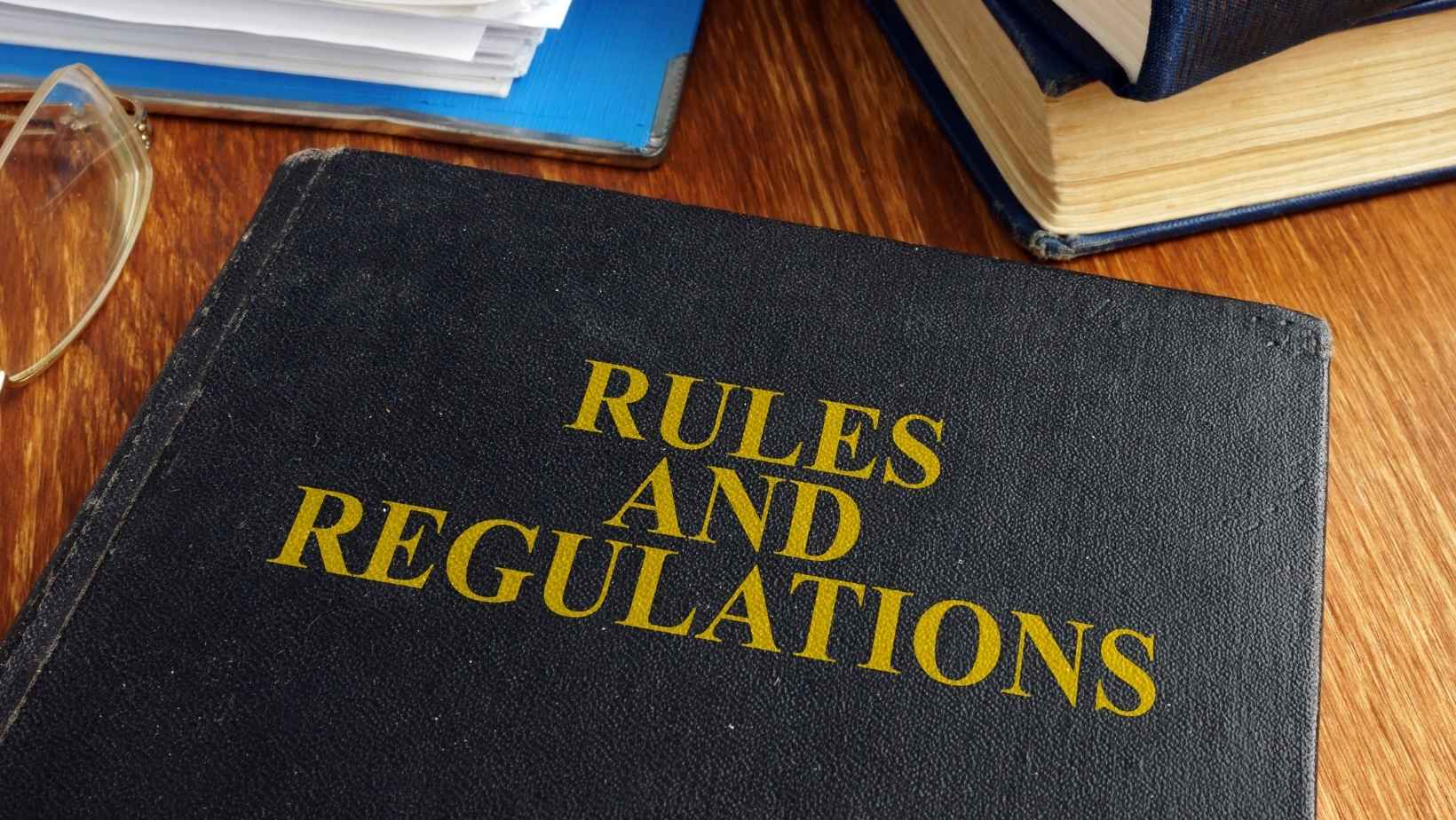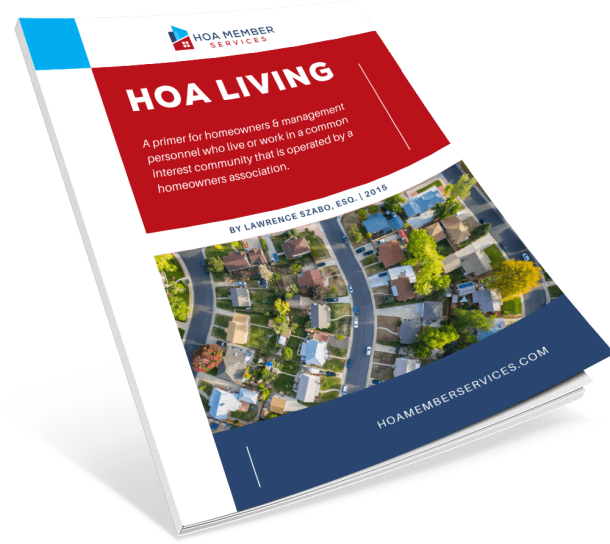Imagine buying your dream home only to discover a group of neighbors has the authority to decide what color you can paint your front door, or whether you can park an RV in the driveway.
For millions of Americans, that’s not a hypothetical; it’s the daily reality of living under a homeowners association, or HOA. These organizations shape communities in ways that often spark both appreciation and frustration.
But why do HOAs exist at all? Were they created to protect neighborhoods, or to control them? The answer is more nuanced than most homeowners realize.
In short, HOAs exist to manage shared community responsibilities, enforce neighborhood standards, and protect property values in residential developments.
Understanding their origins, purpose, and reach helps homeowners navigate their own HOA with confidence. So let’s further explore where HOAs came from, what they’re supposed to do, and why they hold so much influence.

Where Did Homeowners Associations Come From?
At first glance, HOAs feel like a modern invention for suburban America. But their roots extend back further than many realize — tied to early neighborhood covenants, suburban planning, and property law.
Early Roots: Covenants and Deed Restrictions
In the 19th century, as American cities expanded, landowners began placing private covenants and deed restrictions on lots to maintain order, including rules about building setbacks, uses, and construction standards. These private contracts laid the groundwork for the idea of governing shared expectations in neighborhoods.
These early restrictions weren’t associations yet; they were individual agreements. But as subdivisions grew larger, the need emerged for a collective body to administer and enforce those rules.
The First Formal HOAs
One of the earliest recognizable HOAs was formed in Los Angeles in 1916: the Los Feliz Improvement Association. Developers created it to preserve architectural consistency and manage shared upkeep in their subdivision.
By the mid-20th century, as suburbs expanded dramatically after World War II, planned developments began embedding association structures into the very design of neighborhoods. Levittown and other mass-produced postwar suburbs incorporated shared spaces, such as roads, parks, and common areas, which required some organized governance.
Why the Boom of HOAs?
Several factors converged:
- Scale and cost: Individual homeowners couldn’t reasonably maintain large shared infrastructure (roads, landscaping) on their own.
- Marketing: Developers used uniform rules and shared amenities as selling points to attract buyers.
- Legal changes: Over time, states adopted statutes to facilitate common interest developments, making HOAs easier to form and enforce.
By the 1960s, HOAs transitioned from rare to common. Today, as many as one in four Americans live under such associations — and they govern not just single-family subdivisions but condos, townhomes, and planned communities.
Through this evolution, HOAs became institutions not just for preserving aesthetic standards, but for managing shared obligations that homeowners alone would struggle to uphold.
The Legal and Structural Foundation of HOAs
At its core, a homeowners association is not just a club of neighbors; it’s a private nonprofit corporation. When you buy into a community with an HOA, you automatically become a member of that corporation.
That membership isn’t optional. It comes attached to your deed, meaning it runs with the land.
The Governing Documents
Every HOA is guided by a layered set of rules:
- Covenants, Conditions, and Restrictions (CC&Rs): These are the recorded documents that bind every lot in the community. They dictate everything from property use to architectural control.
- Bylaws: These outline how the corporation operates: how meetings are run, how many directors sit on the board, and how elections happen.
- Rules and Regulations: These are the board’s power to fill in the details, such as parking policies, pool hours, or pet limits.
These documents form a hierarchy, with CC&Rs at the top. They are enforceable under state law, which gives them teeth.
How Power Functions
An HOA board, elected by homeowners, wields the authority of the corporation. Its duties include maintaining common areas, enforcing rules, and managing finances. Boards also have fiduciary duties; they must act in the best interest of the association, not themselves.
When disputes arise, HOAs have legal tools: fines, suspension of privileges, liens, and even foreclosure in some states. This level of enforcement often leads homeowners to ask: Why do HOAs have so much power? The answer lies in the combination of recorded covenants, corporate authority, and state statute.
Understanding this structure is key. Without it, homeowners may underestimate both the reach of their association and the rights they still retain to hold it accountable.
Why Did Developers Build HOAs Into Modern Neighborhoods?
If HOAs feel everywhere today, it’s because developers deliberately designed them into the fabric of new communities. The rise wasn’t an accident; it was strategy.
Shifting Public Costs
Local governments saw HOAs as an efficient way to shift infrastructure responsibilities. Roads, drainage systems, and landscaping that cities once paid for could now be maintained privately.
That made it cheaper for municipalities to approve new subdivisions. In fact, research shows how municipalities shifted costs to private HOAs to reduce their own budgets.
Developer Control Period
In the early years of a new community, the developer holds most of the power. This period, often called “developer control,” lets the builder manage the association until enough homes are sold.
Eventually, control transitions to homeowners through board elections. While logical in theory, turnover can spark conflict; owners sometimes inherit underfunded reserves or maintenance obligations that weren’t fully disclosed.
Amenities as a Selling Point
Developers also saw HOAs as a way to market lifestyles. Pools, tennis courts, trails, and clubhouses were attractive features, but they required collective funding and governance. An HOA guaranteed those amenities could be maintained, and rules would keep them in good condition.
Why Mandatory Membership?
Why do mandatory HOAs exist? By the late 20th century, voluntary associations weren’t enough. If even a few neighbors refused to join, funding shortfalls threatened the whole model.
So developers embedded mandatory membership into deeds. If you bought a home in the subdivision, you joined the HOA — no exceptions.
This mix of financial logic, government pressure, and marketing strategy explains why HOAs became standard in new developments. Developers built them not only to sell homes but also to ensure neighborhoods could sustain themselves long after the builder was gone.

What Purpose Do HOAs Serve Today?
Today’s HOAs are more than historical leftovers; they serve practical, everyday functions for millions of homeowners. The question is not just why they exist, but what they actually do for communities right now.
Shared Services and Maintenance
HOAs handle what individual homeowners can’t easily manage on their own:
- Landscaping of common grounds
- Maintenance of private roads and lighting
- Upkeep of recreational facilities like pools, parks, and clubhouses
This collective approach spreads costs across all members, ensuring neighborhoods remain functional and attractive without burdening one owner with an oversized responsibility.
Protecting Property Values
A central mission of most HOAs is to preserve or enhance property values. Uniform standards, whether for architectural design, exterior paint, or yard upkeep, are meant to maintain a consistent look that appeals to buyers.
Studies have shown HOAs can have measurable effects on housing stability, underscoring the link between governance and resale potential.
Compliance and Risk Management
Beyond appearances, HOAs are tasked with protecting the community from legal and financial risks. They secure liability insurance, manage reserves, and enforce safety standards. In this sense, HOAs act like micro-governments — privately run, but responsible for collective well-being.
Tradeoffs and Limits
Of course, the benefits come with tradeoffs. Uniformity can stifle individuality. Rules may feel restrictive, even intrusive. While HOAs aim to balance order with fairness, the scale often tips toward consistency over flexibility.
This is where frustration grows, and where many ask why homeowners’ associations exist at all.
In practice, HOAs today are designed to keep communities livable, predictable, and financially stable. Whether they succeed depends less on their structure and more on how responsibly boards use their authority.
Why Do HOA Fees Exist and How Does It Explain Their Existence?
One of the biggest clues to why HOAs exist lies in their finances. Without collective funding, the entire model of shared community management falls apart.
HOA fees are not an extra tax; they are the financial backbone that explains why HOAs were created in the first place.
Collective Costs, Shared Responsibility
Neighborhoods with common property, such as roads, parks, pools, and stormwater systems, require ongoing care. No single homeowner could reasonably take on that responsibility, and cities often won’t.
HOA fees exist to spread those costs across every household, making the community sustainable. In this sense, the money trail answers the larger question: HOAs exist because someone has to manage and pay for what all residents use together.
Operating and Reserve Budgets
To accomplish this, HOAs rely on two types of budgets:
- Operating budgets for day-to-day costs like landscaping, lighting, trash collection, and management contracts.
- Reserve budgets for long-term repairs and replacements, such as roofs, roadways, or playground equipment.
Without reserves, HOAs are forced into sudden special assessments — one-time charges that frustrate owners and destabilize finances. This is why we stress the importance of reserve studies and long-term planning.
Accountability and Transparency
Because fees are mandatory, boards must demonstrate accountability. Many states require annual budget disclosures and open-book access to financial records. These checks exist to remind both boards and owners that the HOA’s existence is justified only if the money is managed responsibly.
In short, HOA fees aren’t arbitrary; they explain the very reason HOAs exist: to pool resources and keep neighborhoods functional, attractive, and financially stable for everyone.
Why Do HOAs Have So Much Power and What Are the Guardrails?
Another reason HOAs exist — and remain controversial — is the level of authority they exercise over homeowners. Many people wonder how a private association of neighbors can fine them, restrict property uses, or even foreclose. The answer lies in how HOAs are structured and what the law allows.
Sources of Authority
HOAs draw their power from three main sources:
- Recorded Covenants: When you purchase property in an HOA, you accept binding covenants tied to the land. These grant the association enforcement rights.
- State Statutes: Most states have laws that grant HOAs corporate powers, detail enforcement procedures, and outline homeowner rights.
- Corporate Authority: As nonprofit corporations, HOAs can adopt rules, collect assessments, and contract for services on behalf of the community.
Combined, these sources make HOAs more than a casual neighborhood club. They are legal entities with real authority, which explains why HOAs exist in the first place — to enforce collective agreements with enforceable tools.
Enforcement in Practice
Typical enforcement escalates step by step: courtesy notice, hearing, fines, lien, and in some cases foreclosure. This is why homeowners often feel HOAs have “too much power.”
Yet due process requirements and statutory limits apply. Boards must act fairly and within the law.
The Balance of Power
Power is not absolute. Homeowners elect the board, amend governing documents, and challenge actions in court if necessary. State legislatures also update laws to restrain abuse.
In short, HOAs seem powerful because they were designed to be enforceable. Their existence depends on the ability to hold members accountable. But that same design also builds in checks to prevent overreach, at least when owners know and exercise their rights.

Can You Refuse to Join a Homeowners Association?
The short answer: usually no. If a community was created with a mandatory HOA, membership is tied to the property deed. That means when you buy the home, you also buy into the association, whether you want to or not.
Mandatory Membership
Modern subdivisions almost always come with mandatory HOAs. Developers record covenants that run with the land, legally binding every property owner. Refusing membership is not an option because ownership itself is conditional on acceptance of the HOA’s rules and obligations.
This system ensures that all homeowners contribute to maintaining common property and funding shared expenses. Without mandatory participation, the financial model of the HOA would collapse.
Voluntary Associations
There are exceptions. Some older neighborhoods have voluntary HOAs that rely on goodwill rather than deed restrictions. Membership might come with perks like access to a neighborhood pool or social events, but owners can decline without legal consequences.
These models are increasingly rare, since developers and municipalities prefer mandatory funding to guarantee stability.
Buyer’s Choice
The real moment of choice is before purchase. If you want to avoid living under HOA rules, you must carefully research neighborhoods where no association exists.
Title reports, real estate listings, and local government records can help you confirm whether a property is within an HOA. Asking questions up front can prevent unwelcome surprises later.
Why It Matters
This framework answers another piece of the larger question: why do HOAs exist? They exist to guarantee that all owners share the burdens and benefits of the community.
For that system to work, membership has to be compulsory. In essence, you cannot refuse to join because refusing would undermine the very purpose for which HOAs were created.

Do HOAs Exist in Other Countries, and How Do They Compare?
While homeowners’ associations are often seen as uniquely American, similar models exist around the world. What changes is the legal framework, the scope of authority, and how communities view them.
Condominium and Strata Models
In Canada, most provinces use condominium corporations, which function much like HOAs for shared communities. Owners automatically become members when purchasing a unit, and the association handles maintenance, budgets, and enforcement.
Ontario’s Condominium Act spells out owner rights, board duties, and governance procedures.
In Australia and New Zealand, the system is called “strata title,” while the UK uses “commonhold.” All of these models echo the HOA’s role of collective management, but often with tighter statutory oversight.
Europe’s Approach
In Germany, Wohnungseigentumsgesetz (WEG) governs condominiums, focusing on owner assemblies and professional managers.
France has its “copropriété,” where syndicates manage shared property. These systems usually grant boards less discretion than many US HOAs — decisions often require larger majorities, and courts play a more active role in oversight.
Other Global Examples
In South Africa, sectional title schemes operate much like HOAs, with body corporates collecting fees and enforcing rules.
Singapore uses Management Corporations for high-rise estates. The thread across all these systems is the same: shared property requires shared governance and funding.
Why the US Model Stands Out
What makes American HOAs distinctive is their breadth of coverage. US associations govern not only condominiums and townhouses but also vast subdivisions of single-family homes.
They often hold broader enforcement power, such as fining or foreclosing, which other countries tend to reserve for public bodies.
So, do HOAs exist in other countries? Yes. But their powers are usually narrower, their oversight stricter, and their cultural acceptance different. This contrast helps explain both why HOAs exist in the US and why they often feel uniquely powerful here.
Where Are HOAs Headed Next?
Homeowner associations are not static. They continue to evolve in response to financial realities, legal reforms, and shifting homeowner expectations. Looking at current trends can help us understand not just why HOAs exist now, but how they may change in the future.
Aging Infrastructure and Rising Costs
Many HOAs created in the 1970s and 1980s are now grappling with aging roads, roofs, and recreational facilities. Reserve funds in some cases fall short, forcing difficult choices between special assessments and increased dues.
As inflation and insurance costs climb, financial management will become the defining challenge for associations.
Insurance and Risk Exposure
Climate change and severe weather events are driving up premiums nationwide. Communities in wildfire zones, coastal areas, and floodplains face particular pressure.
Without sufficient insurance coverage, HOAs risk insolvency. This reality is pushing boards to think more strategically about risk pooling and long-term sustainability.
Professionalization and Technology
More communities are turning to professional managers, online platforms, and compliance tools to streamline operations. These shifts bring efficiency but also raise questions about accessibility and homeowner engagement.
Associations that embrace transparency through digital tools may see less conflict with residents.
Legislative Reform
State legislatures are increasingly active in regulating HOAs. Topics include election procedures, records access, debt collection, and foreclosure limits. These reforms aim to balance the necessary power of HOAs with protections for individual homeowners.
The Bigger Picture
Why do HOAs exist in the future? Likely for the same reasons as today: to fund, manage, and enforce the obligations of shared living.
But the scope of their authority, and how much oversight they face, will keep evolving as homeowners, developers, and lawmakers negotiate where that balance should rest.

The Bottom Line
At the simplest level, HOAs exist because shared property requires shared management. From their origins in private covenants to today’s mandatory associations, the logic has remained the same: neighborhoods need collective rules and collective funding to function.
They exist to:
- Maintain shared infrastructure such as roads, lighting, drainage, and recreational spaces.
- Protect property values by enforcing uniform standards and rules.
- Shift costs from cities to communities, making new developments possible.
- Provide governance and dispute resolution when owners disagree.
- Pool resources so that no single homeowner bears the full cost of shared obligations.
Of course, this existence comes with tradeoffs. HOAs can provide stability and order, but they can also overstep. They protect the whole, but sometimes frustrate the individual.
They were designed to balance efficiency with accountability, and how well they succeed depends heavily on the knowledge and participation of homeowners themselves.
So, when you ask why do HOAs exist, the answer isn’t only historical. They exist today because millions of Americans live in communities where cooperation is mandatory. They exist tomorrow because no better substitute has yet replaced them.
The real question for homeowners is not whether HOAs exist, but how you can navigate and shape them to work better for your community.
That’s why our site offers guides, free resources, and unlimited personal support from HOA attorneys through our membership plans.
Take the Right Step
Explore our resources today, and take control of your HOA experience.



